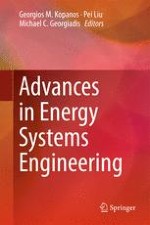2017 | OriginalPaper | Buchkapitel
28. Reducing the Life Cycle Environmental Impact of Buildings Following a Simulation-Optimization Approach
verfasst von : Joan Carreras, Dieter Boer, Luisa F. Cabeza, Marc Medrano, Laureano Jiménez, Gonzalo Guillén-Gosálbez
Erschienen in: Advances in Energy Systems Engineering
Aktivieren Sie unsere intelligente Suche, um passende Fachinhalte oder Patente zu finden.
Wählen Sie Textabschnitte aus um mit Künstlicher Intelligenz passenden Patente zu finden. powered by
Markieren Sie Textabschnitte, um KI-gestützt weitere passende Inhalte zu finden. powered by
